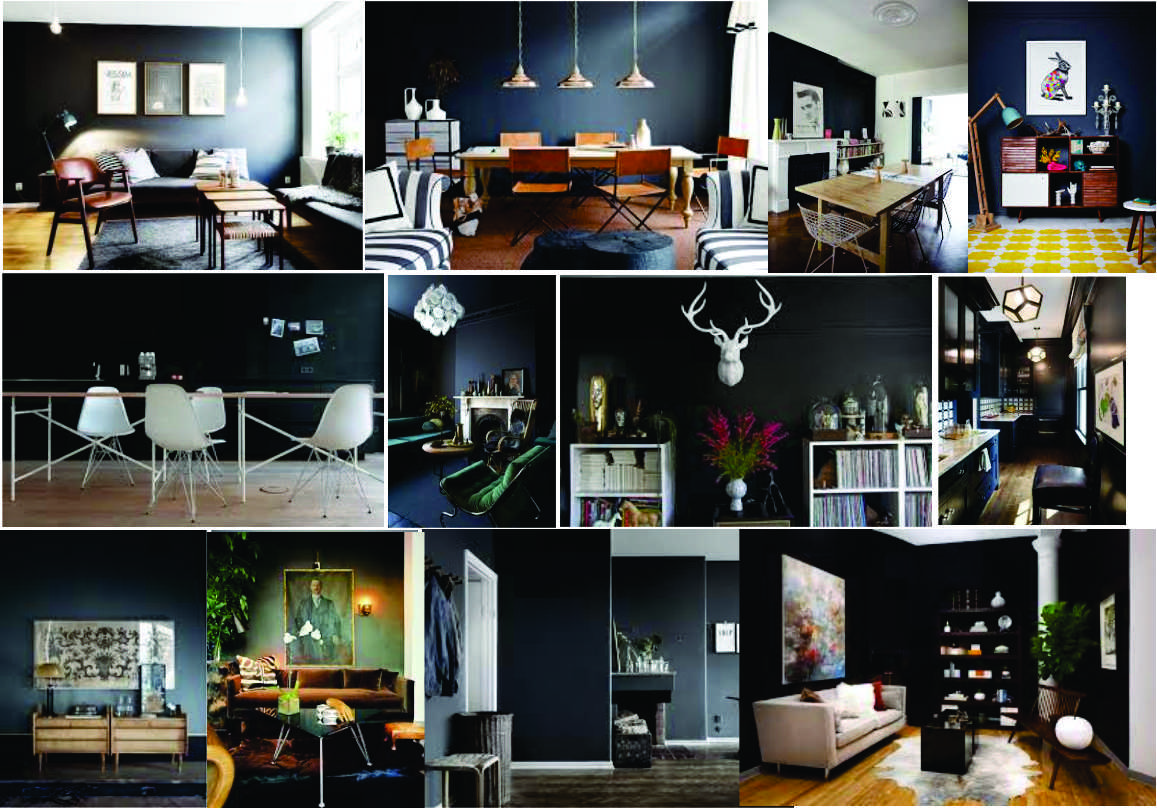“And if the cloud bursts thunder in your ear
You shout and no one seems to hear
And if the band you’re in starts playing different tunes
I’ll see you on the dark side of the moon” – Pink Floyd
The idea of painting a wall black can send some people running for the hills. The myth states that dark walls make a room look smaller, colder and depressing, whereas white expands a space. This theory made sense to me when I first heard it, and it still is a great way to brighten a room. However, throughout my career I’ve begun to appreciate the value of darker walls in small spaces.
While white is an easy, safe and versatile base, the way that light interacts with white can be very static. As light in a room changes throughout the day, so does a dark wall. Instead of reflecting more light, as with white and light hues, dark colours reflect less and absorbs more. This creates the illusion of depth and shadow because the edges of the space is blended and not defined by the light.
A dark colour establishes an elegant backdrop that allows you to go either spare and minimalistic on accessories or opulent with artifacts. Ensure that there is a balance and contrast between furniture and accessories. For example, a bright colour area rug or warm timber flooring will do the trick. Warm timber cabinetry against dark walls will add instant warmth to any small space. Also consider having trims, skirting and architraves painted white to create a dramatic contrast and a surprising balance.
Here are some images you can feast your eyes on:

